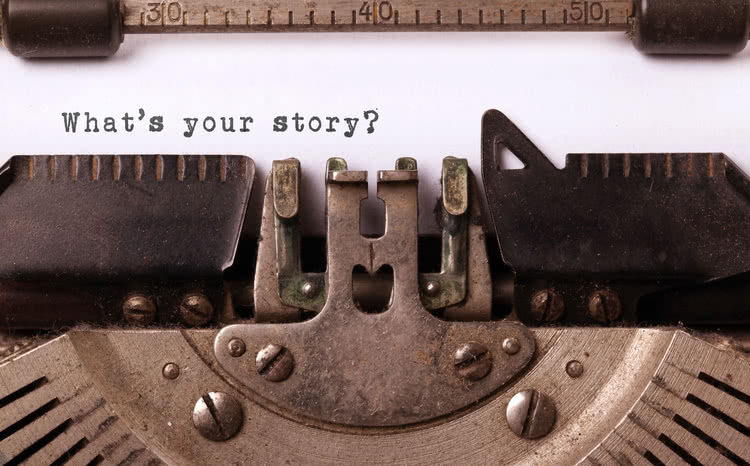“Narrative transforms insignificant objects into significant ones.” That was the hypothesis for an experiment called the Significant Objects Project.
The experiment, conceived by Joshua Glenn and Rob Walker, involved the purchase of 200 items for no more than a few dollars each. They asked writers to create a story for each object and then put them up for auction on eBay, with the stories included in the descriptions.
The results were astounding – the value of the items (essentially secondhand tat) massively ascended. The junk (which had cost a total of $128) was sold for $3,612 – that’s an increase of more than 2,700%.
According to the authors of the study, “Stories are such a powerful driver of emotional value that their effect on any given object’s subjective value can actually be measured objectively.”
So, what does this all have to do with events? Creating compelling stories for your event can increase buy-in at every level. Storytelling helps you capture attention, connect better with attendees and communicate in a way we can all understand (we’re hardwired to do so).
Because humans have been telling stories for thousands of years, we’ve evolved to respond to them. Read on to discover more about the psychology of storytelling and how you can apply that to improve your event.
Our brains respond differently to stories
Incredibly, our brains have been shown to process stories completely differently to other information. When we hear neutral words, only the language-processing parts of our brain engage, but when those words are part of a narrative, other sensory areas light up. It is almost as if we are experiencing the story ourselves and it has the same effect regardless of whether we are reading or hearing it.
Researchers in Spain found that telling stories involving words associated with odour, such as “perfume” and “coffee”, triggers the primary olfactory cortex. Meanwhile, scientists in France noticed that sentences containing action, like “Pablo kicked the ball,” cause activity in the motor cortex, which coordinates the body’s movements.
This highlights how engagement can be dramatically increased through storytelling – your attendees can physically experience what you’re describing if you do it in the right way! As such, having your speakers use lots of real-life examples can really help attendees to understand the content.
Stories couple people’s brains together
Something else miraculous happens when we listen to a story; the brain of the person listening to the story can synchronise with the person telling it. The phenomenon, known as ‘neural coupling’, was demonstrated by a team of scientists at Princeton University in America. In the experiment, a woman told a story while an MRI scanner tracked her brain activity.
Next, they played the recorded story to a group of volunteers while they had their brains scanned. They found that the brain activity of the storyteller and the listeners mirrored each other. When she had activity in her insula cortex, an emotional brain region, the listeners did too. When her frontal cortex lit up, so did theirs – they experienced the exact same brain pattern.
The study also looked at listening comprehension. It found that the more the listeners understood the story, the more their brain activity dovetailed with the speaker’s brain activity. However, when she told the story in Russian, which none of the listeners understood, the speaker-listener brain coupling disappeared.
The exciting finding from this research is that, if you’re looking to induce empathy and understanding in others, you can do just that by telling a clear and powerful story. For fundraising events or events seeking to initiate social change, this knowledge is key.
Storytelling increases trust and cooperation
It’s not just our brains that respond to stories – studies show our endocrine system activates too. Hormones released include dopamine (a neurotransmitter that helps control the brain’s reward and pleasure centres), oxytocin (the “cuddle hormone”), and endorphins (morphine-like chemicals which can be induced by laughter).
These could all be broadly categorised as “feel good” hormones, meaning we feel much more connected and endeared to someone telling a story. Oxytocin, in particular, motivates cooperation by enhancing the sense of empathy.
According to Paul J. Zak, Founding Director of the Center for Neuroeconomics Studies, California, it is possible to “hack” the oxytocin system to motivate people to engage in cooperative behaviours. His lab found that character-driven stories consistently cause oxytocin synthesis.
Further, the amount of oxytocin released by the brain can predict how much people are willing to help others; for example, by donating money to a charity associated with the narrative. In their experiment, which showed viewers a video about a dying boy and his dad’s struggle to remain joyful around him, about half of viewers were compelled to donate to a childhood cancer charity.
“We discovered that, in order to motivate a desire to help others, a story must first sustain attention – a scarce resource in the brain – by developing tension during the narrative,” he said. “If the story is able to create that tension then it is likely that attentive viewers/listeners will come to share the emotions of the characters in it, and after it ends, likely to continue mimicking the feelings and behaviours of those characters.”
Storytelling increases focus and recall
In addition to oxytocin, building suspense also ensures the release of dopamine. This chemical increases focus and memory, meaning if you can keep your listeners anticipating, you can make a lasting impression.
The effect of expectation and surprise on dopamine was demonstrated by an experiment carried out by researchers from Emory University in Georgia, where two groups received a squirt of fruit juice into their mouths at either predictable or unpredictable intervals. MRI scans revealed that the group that received the juice at unpredictable moments exhibited more activity in the reward centre of their brain.
Although it helps to keep listeners on the edge of their seats when it comes to making an impact, it’s not essential – simply the structure of a story aids recall. Memory experts have long realised the power of narratives as mnemonic devices (I still remember one I created aged 10 to help me spell “because” – Bernie eats custard and usually some eggs).
It’s just far easier to remember a story than it is a string of words or letters or a chunk of information. To illustrate that point further, take the study conducted by Jennifer Aaker, a marketing professor at Stanford’s Graduate School of Business in the US.
She had each of her students give a one-minute pitch. Only one in 10 students used a story within his or her pitch while the others stuck to more traditional pitch elements, such as facts and figures. The professor then asked the class to write down everything they remembered about each pitch: 5% of students cited a statistic, but a whopping 63% remembered the story.
“Research shows our brains are not hard-wired to understand logic or retain facts for very long. Our brains are wired to understand and retain stories,” said Aaker.
With this in mind, it’s easy to see why long-winded PowerPoint presentations at conferences are not an effective way to disseminate learning. Humanising your data by explaining how it affects people’s lives is the best way to ensure it resonates.
Conclusion
When you want to motivate, persuade, or be remembered, start with a story. You can incorporate storytelling into all aspects of your event, from your marketing and community building, through to your venue, content and even your catering. There’s always a story to tell and your attendees will love to listen!





